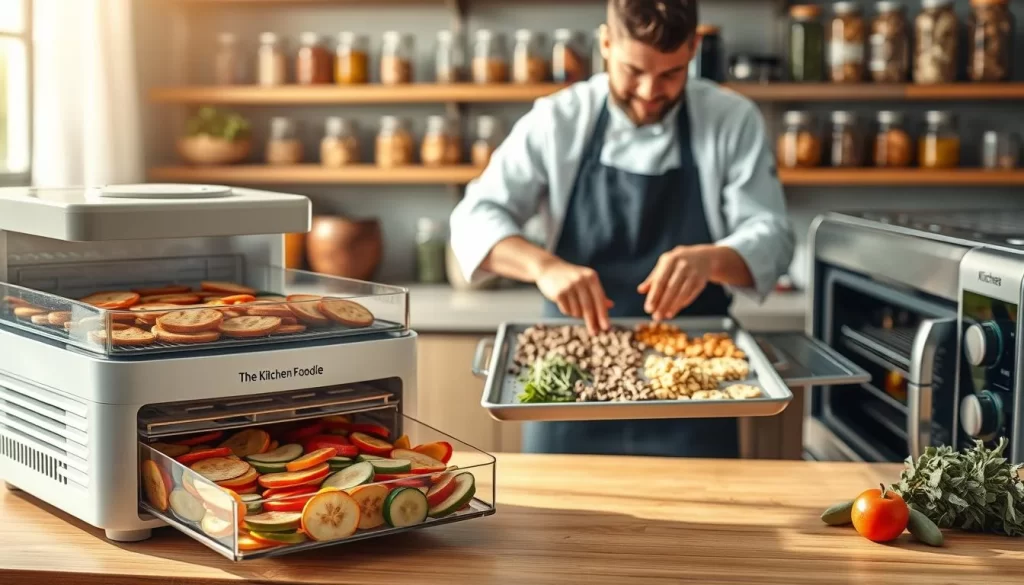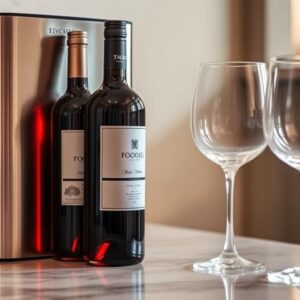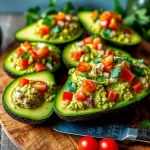We help home cooks turn fresh ingredients into amazing dishes. Canning is done using USDA-approved methods. For high-acid foods, use water-bath canning at 212°F. For low-acid foods, pressure canning at 240°F is best.
Freezing needs airtight wraps and keeping it at 0°F. Make sure not to overfill to avoid burns. Electric dehydrators make drying faster than sun-drying. These methods let you make recipes all year, from pickles to dried herbs.
Our guide makes it easy to follow steps like syrup ratios and fermentation timelines. Learn about USDA guidelines for canning and blanching veggies. Proper preservation mixes tradition and science, making every jar or frozen batch a creative tool.
Mastering these methods helps reduce waste and save money. It also lets you cook with the best ingredients at their peak.
The Art of Food Preservation: Extending Your Pantry’s Potential
Learning how food spoils is key to preserving it. Canning, freezing, and drying all stop decay. Heat kills germs in canning, freezing stops bacteria, and drying removes moisture where microbes live.
Modern guides from the University of Georgia and the USDA keep it safe and true to tradition.
Food preservation is more than science; it connects us to the past. Old methods like drying have become modern techniques. They keep nutrients and flavors alive. Foods with 20% moisture or less stay safe and full of nutrients.
These preserved foods are the foundation for healthy cookbook recipes and easy cookbook recipes. They make cooking meals quick and easy.
Preserving food also helps the planet. It captures the best flavors of the season, reducing waste. Whether you’re pickling veggies or freezing soups, you build a pantry full of versatile ingredients.
This knowledge turns preserved foods into creative meals. It balances healthy eating with convenience. With the right methods, your efforts create dishes that honor tradition and fit today’s fast-paced lives.
Mastering the Water Bath Canning Process
Water bath canning is key for keeping foods like jams, pickles, and tomatoes fresh. It uses boiling water to reach 212°F, making food safe and shelf-stable. This skill lets you make tasty pantry items that feel as fresh as the day they were made.
You’ll need a canning pot, jars, and a jar lifter to start. Always use tested recipes from trusted sources like seasoning guides and the All New Ball Book of Canning and Preserving. Fill jars to the top, then cover them in boiling water. Adjust the cooking time based on altitude and food type for safety and quality.
- Use ripe, unbruised produce for vibrant flavor.
- Check seals after cooling by pressing lids; they should stay firm.
- Store sealed jars in a cool, dark place for up to one year.
Preserved foods like pickles and fruit compotes are great for many recipes. Think tangy pickles in winter salads or spiced applesauce in fall. Following guidelines from the National Center for Home Preservation helps avoid spoilage. This way, you make ingredients that make meals better. Remember, being precise and patient leads to delicious results.
Pressure Canning: Preserving Low-Acid Foods Safely
Pressure canning is key for foods like meats, beans, and veggies. It reaches 240°F, beyond what water bath canning can do. This method keeps food safe from botulism and retains nutrients and texture.
Start by picking a pressure canner, not a pressure cooker. The USDA recommends this. Sizes and prices vary, but a good canner lasts a long time.
Safety is crucial. Always use tested techniques. Check your gauge yearly and adjust times for your altitude. Quart jars cost about $1 each.
A full batch takes 3–4 hours. But the reward is having pantry staples for quick cookbook recipes. Think of homemade soup or stews ready in minutes.
Cookbook recipes like those in The Complete Guide to Pressure Canning (Rockridge Press, 2018) offer 80+ methods. From chili to salsa, these quick cookbook recipes make meals without preservatives. Sealed jars stay good for a year, perfect for busy times or power outages.
Quick Cookbook Recipes Using Home-Canned Ingredients
Home-canned goods make cooking quicker and easier with our quick cookbook recipes. The best cookbook recipes in our collection are simple. They turn canned tomatoes into rich pasta sauces or blend beans into protein-packed dips. Our guide “Take One Can” has 80 dishes for busy cooks, ready in under 30 minutes.
Begin with canned tomatoes for a 20-minute marinara or mix them into chili for a quick dinner. Canned beans are great in tacos, salads, or veggie burgers—no soaking needed. Artichokes add luxury to pizzas, and corn kernels make crispy fritters in under 15 minutes. Even small jars of chilies or sun-dried tomatoes add big flavor to grain bowls or stir-fries.
Our best cookbook recipes mix convenience with creativity. Try a chickpea curry using canned beans, or blend peaches into a glaze for grilled chicken. Each recipe uses 10 ingredients or fewer, like the 20-minute salmon bake with canned beans and veggies. These methods save time without sacrificing taste—making home-canned foods the hero of your pantry.
Freezing Techniques: Beyond the Ice Cube Tray
Freezing is more than just tossing things in the freezer. It’s about keeping ingredients fresh and tasty. Start by blanching veggies like broccoli or green beans to keep nutrients in. Use airtight containers or vacuum-sealed bags to prevent freezer burn.
Keep your freezer organized with labeled containers and a rotation system. Use ice cube trays for small portions. Freeze pesto, caramelized onions, or tomato paste in cubes. One cube of pesto can flavor pasta dishes, while tomato paste cubes help avoid waste.
- Chop herbs like basil or cilantro, mix with olive oil, and freeze in cubes.
- Portion soups or stocks into containers for quick weeknight meals.
- Blanch veggies first—3 minutes for green beans, 5 for broccoli—to retain texture.
Freeze citrus zest or lime wedges in zipper bags for summer drinks. Even roasted garlic can be frozen in cubes with olive oil for future mashed potato recipes. Try blending leftover smoothie ingredients into cubes for smoothies or cookbook recipes needing a quick flavor boost. Use cubes within 3-6 months and rotate stock monthly. This way, your freezer becomes a meal prep powerhouse.
Food Dehydration: Ancient Method, Modern Applications
Dehydration is a method that goes back to our earliest days of preserving food. It removes moisture, stopping bacteria from growing and making food last longer. Today, electric dehydrators make this process easier, with precise temperature control and airflow.
These modern tools are a big improvement over ancient sun-drying methods. They save time and space, making food dehydration more accessible.

Dried ingredients like tomatoes and herbs add amazing flavors to top cookbook recipes. Vegetarian recipes often use dried mushrooms or apricots to add sweetness. These ingredients can make soups and salads taste better.
Proper storage in airtight containers is key to keeping these ingredients fresh. For example, dried apples can last up to a year if stored properly.
Begin by slicing apples thinly and drying them at 135°F for 6–12 hours. Store them in mason jars. Try drying herbs like basil or rosemary to make your own seasoning blends.
For vegetarian cookbook recipes, dried vegetable powders can add flavor without salt. Make sure to dry food evenly to avoid mold and ensure the right texture. This method helps reduce waste and enjoy seasonal flavors all year.
Seasonal Preservation Guide: What to Can, Freeze, or Dry Each Month
Planning your preservation around the seasons makes food taste better and saves money. In spring, freeze or dry fresh greens and herbs. Quick-freezing is great for basil or parsley, keeping them fresh for summer.
Summer is the time for canning tomatoes and pickling cucumbers. “The Joy of Pickling” has over 250 recipes for seasonal veggies. Fall is perfect for making jams or dried apple slices. Winter citrus can be candied or frozen for tangy compotes or spiced syrups.
Start small with your preservation. Freeze berries in a single layer for easy servings. Dry herbs in a 130°C oven for 40–70 minutes. Summer tomatoes can be canned for up to 5 years.
“Complete Book of Home Preserving” has over 400 recipes for seasonal foods. Small projects, like freezing squash or drying apples, can stock your pantry with the year’s harvest.
Use preserved foods in easy recipes from “Put ’em Up!” and “The Pickled Pantry.” Store sealed jars in a cool pantry. Use opened jars within 5 days if they have less sugar. Preserving food aligns with nature, saving up to 50% on seasonal costs. Let’s enjoy preserving one jar, freezer bag, or batch at a time.
Transforming Preserved Foods Into Top Cookbook Recipes
Preserved ingredients are more than just pantry staples. They are flavor powerhouses ready to enhance your meals. Think about mixing sun-dried tomatoes with fresh basil or adding homemade pickles to sauces. These simple actions can turn your preserved foods into family heritage recipes that match the quality of best cookbook recipes. Start by mixing preserved and fresh ingredients to add depth without making things complicated.
Planning meals becomes easy when you use preserved foods as flavor bases. A jar of fermented chili paste can spice up your pasta, while dried mushrooms can make your risotto taste richer. Our approach makes it simple to create menus that showcase seasonal preserves. For instance, top cookbook recipes often use homemade stock or roasted red pepper purée to save time. This way, you can make gourmet dishes like chefs, but with ingredients you’ve made yourself.
For inspiration, check out Savannah Ryan’s culinary journey. Even beginners can adapt best cookbook recipes by swapping out store-bought items with their preserved versions. Whether it’s turning Grandma’s salsa into a dip or using fermented veggies as salad toppings, every jar is a chance to get creative. Your preserved pantry is not just useful—it’s a blank canvas for tasty creations.
Common Preservation Mistakes and How to Avoid Them
Even the most skilled preservers can make mistakes. Let’s look at common errors and how to fix them. One big mistake is using boiling water canning for foods like veggies or meats. This method can’t kill harmful bacteria like Clostridium botulinum, which can cause botulism. Always use recipes from trusted sources like America’s Test Kitchen’s guide, which offers safe quick cookbook recipes for high-acid foods.
Another mistake is not leaving enough headspace in jars. You should leave ¼ to 1 ¼ inches as directed. Too little space can trap air, while too much can cause seal failures. Always simmer ingredients before canning to sterilize them and reduce air pockets. Rushing through steps, like skipping venting pressure canners or reusing lids, can also be risky. Our community has saved many batches by simple fixes like adjusting jar heights during freezing or using silica mats to prevent freezer burn.
If things go wrong, don’t throw away your food. Overly soft pickles can still be used in healthy cookbook recipes like tangy salads. Mushy frozen veggies are great in soups or smoothie mixes. Remember, botulism risks mean you must follow tested methods carefully. Never taste spoiled food—trust your senses. If jars don’t seal, store them in the fridge and use within a week.
Stay safe by checking the National Center for Home Food Preservation’s guides. Every mistake is a chance to learn and improve. With patience and science-backed steps, every kitchen mishap can teach us something new.
Preserving Culinary Heritage: How Food Preservation Connects Us to Our Roots
Food preservation is more than keeping food fresh. It connects us to our ancestors’ wisdom. Every jar of pickles or dried herb tells stories of resilience and creativity. Gavin Beinart-Smollan’s work digitizing South African Jewish cookbooks shows how recipes reflect cultural changes (read more here). This mirrors Savor The World Global Bites, a cookbook with easy recipes that blend tradition and simplicity.
Valerie J. Frey’s guide helps document family recipes before they’re lost. Imagine saving heirloom ingredients like Carolina Gold rice or Ossabaw Island pork, as Chef Sean Brock suggests. His work on reviving these foods is part of a larger trend. 80% of Southerners still bake cornbread at 450°F, a tradition passed down through generations. Simple actions, like writing down Grandma’s cornbread recipe or adapting popular recipes, keep heritage alive.
Every preserved dish connects us to a long line of cooks. Whether you’re canning tomatoes or drying herbs, you’re part of a tradition. Use Frey’s advice to interview elders, adapt old recipes, and celebrate regional flavors. From Hopping John to tsukemono pickles, these methods show that preservation is both practical and poetic. Your kitchen becomes a stage where every bite tells a story, linking past and present.
Source Links
- https://www.dummies.com/article/home-auto-hobbies/food-drink/canning/food-preservation-methods-canning-freezing-and-drying-195272/
- https://nchfp.uga.edu/how/dry/recipes/
- https://www.toledolibrary.org/blog/put-up-and-eat-up-canning-and-food-preservation/
- https://foodrevolution.org/blog/food-storage-food-preservation/
- https://tucsonfoodie.com/2018/02/26/jewish-food-preservation-jewish-community-center/
- https://foodprint.org/blog/water-bath-canning/
- https://www.saveur.com/food/a-step-by-step-guide-to-waterbath-canning/
- https://www.almanac.com/pressure-canning-guide
- https://canningdiva.com/product/the-complete-guide-to-pressure-canning/
- https://podcasts.apple.com/us/podcast/ep-1332-how-to-pressure-can-vegetables-meats-stews/id757378889?i=1000651399353
- https://www.splendidtable.org/story/2020/04/14/take-one-can-can-tastic-recipes-to-create-simple-delicious-versatile-meals
- https://www.tasteofhome.com/collection/recipes-made-canned-foods/?srsltid=AfmBOopCwmEMjkflM8GXsnNgClcxVZLKJ7ftPzFgAHER1LrU2Hz48rtz
- https://www.thekitchn.com/12-ways-to-preserve-vegetables-in-ice-cube-trays-221280
- https://food52.com/blog/19619-your-ice-cube-tray-is-good-for-a-lot-more-than-well-ice-cubes?srsltid=AfmBOooZygUgQtAD_jiPS9gfb-Sf_8MLvExtqZG8FLJdSQ6hWy63abVD
- https://www.forksoverknives.com/how-tos/fresh-herbs-citrus-more-flavor-essentials-freezing-guide/
- https://urbansurvivalsite.com/dehydrate-food-with-no-electricity/
- https://frostygarden.com/topics/an-overview-of-food-preservation-techniques-we-use/
- https://www.wisebread.com/preserving-in-season-foods-for-off-season-feasts
- https://www.homegrown-kitchen.co.nz/recipes/guide-to-preserving/
- https://www.goodreads.com/book/show/75638903-the-ultimate-food-preservation-canning-cookbook-bible
- https://cupofjo.com/2021/01/27/how-do-you-preserve-family-recipes/
- https://bethesdamagazine.com/2022/05/16/from-cookbooks-to-icloud/
- https://www.rizzoliusa.com/book/9780789327451/
- https://www.tastingtable.com/1574908/mistakes-canning-food/
- https://extension.sdstate.edu/safe-canning-recipes
- http://extension.msstate.edu/blog/10-home-canning-mistakes-avoid
- https://ugapress.org/book/9780820330631/preserving-family-recipes/
- https://thekojonnamdishow.org/shows/2014-11-19/preserving_the_past_sean_brock_and_our_culinary_heritage











